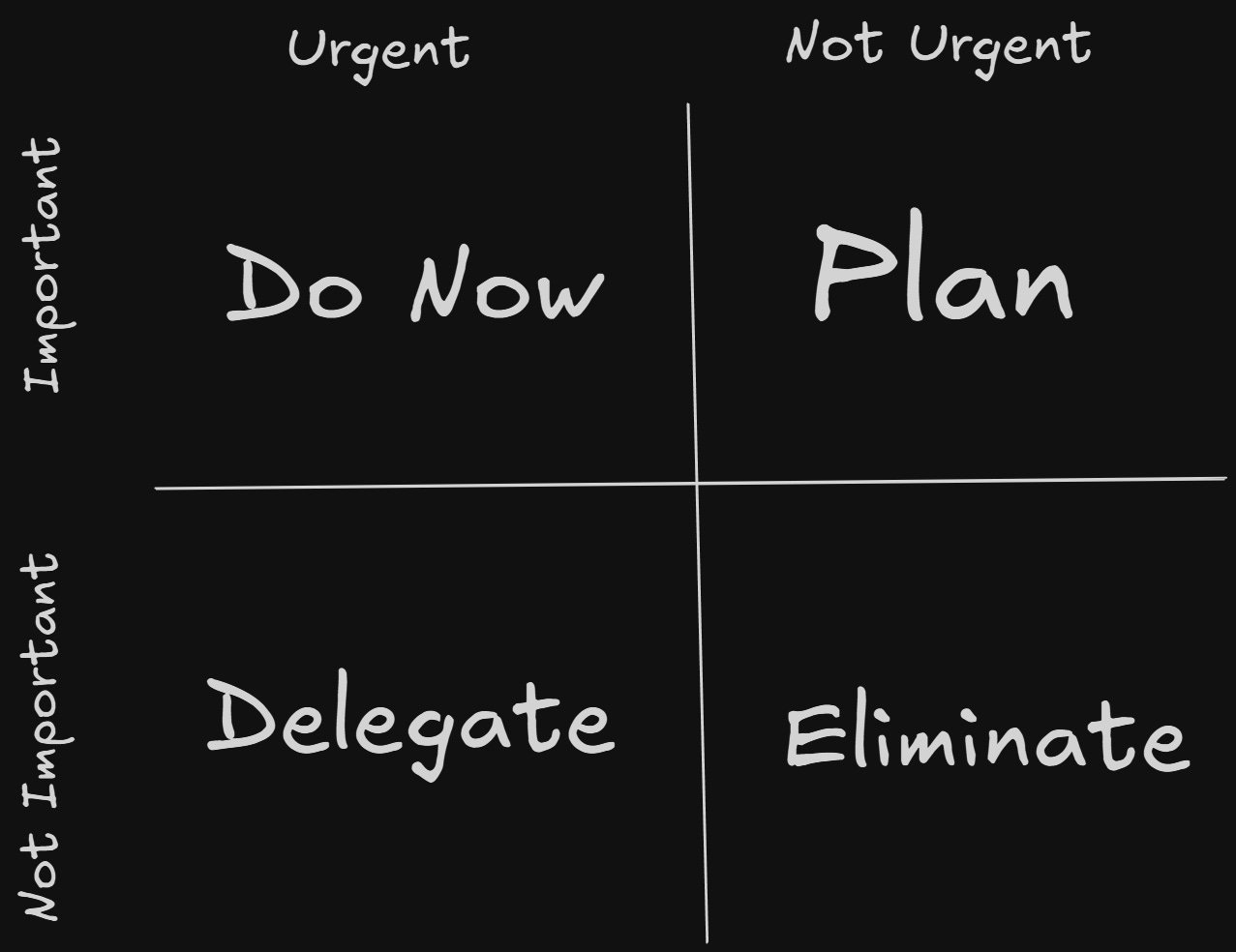How to Use the Eisenhower Matrix to Master Your Priorities
Introduction
Are you drowning in tasks and unsure where to start? You’re not alone. In a chaotic world, clarity is rare, and effectiveness is priceless. Enter the Eisenhower Matrix—a simple tool that organizes your priorities and transforms your productivity. Picture this: a packed schedule with conflicting demands. Instead of spiraling into stress, you use a structured approach to decide what matters most. Named after Dwight D. Eisenhower, who famously distinguished between what is urgent and what is essential, this framework is your ticket to mastering your time and life. Let’s break it down.
What is the Eisenhower Matrix?
The Eisenhower Matrix is not just a productivity tool—it’s a philosophy. It forces you to confront the brutal truth: not everything is equally important. This framework divides tasks into four quadrants:
Urgent and Important (Do Now): Tasks demanding immediate action, with serious consequences if ignored.
Important but Not Urgent (Plan): High-value tasks that require foresight and deliberate effort.
Urgent but Not Important (Delegate): Distractions masquerading as priorities, better handled by others.
Not Urgent and Not Important (Eliminate): Time-wasters that drain your energy and offer no value.
This is not just about managing tasks—it’s about mastering focus. By categorizing work, you eliminate the noise and amplify what truly matters.
Why the Matrix Works
The brilliance of the Eisenhower Matrix lies in its ruthless simplicity. It delivers:
Clarity: Defining what is urgent versus important slices through the fog of indecision.
Focus: It aligns your actions with long-term goals, avoiding the trap of perpetual firefighting.
Efficiency: You free up energy for meaningful work by delegating and eliminating.
Confidence: It gives you a system to trust, reducing decision fatigue and mental clutter.
This framework isn’t just a tool; it’s a discipline. It challenges you to think critically about every task you undertake.
Step-by-Step Guide to Using the Eisenhower Matrix
Inventory Your Tasks
Write down every task demanding your attention. Be exhaustive—include the trivial and the significant. This raw list is your starting point.
Categorize Ruthlessly
Now, the hard part is to assign each task to a quadrant. Don’t overthink it; use your intuition.
Quadrant 1: Urgent and Important
Example: Preparing for a critical presentation tomorrow or addressing a pressing client issue.
Quadrant 2: Important but Not Urgent
Example: Developing a new skill or crafting a long-term strategy.
Quadrant 3: Urgent but Not Important
Example: Answering routine emails or attending a non-critical meeting.
Quadrant 4: Not Urgent and Not Important
Example: Scrolling social media or indulging in unproductive hobbies.
Act Decisively
Quadrant 1 (Do Now): Attack these tasks immediately. They are non-negotiable.
Quadrant 2 (Plan): Block time in your calendar to tackle these at peak focus.
Quadrant 3 (Delegate): Pass these tasks to capable hands and move on.
Quadrant 4 (Eliminate): Let them go. Say “no” without apology.
Reassess Regularly
Life is dynamic, and so are your priorities. Review your matrix weekly. Ask yourself, “Am I drifting into busy work or staying aligned with what truly matters?”
Practical Applications
Scenario 1: The Overwhelmed Manager
Urgent and Important: Resolve a customer crisis.
Important but Not Urgent: Strategize team development goals.
Urgent but Not Important: Approve a routine expense report.
Not Urgent and Not Important: Gossiping at the water cooler.
Scenario 2: The Ambitious Student
Urgent and Important: Finish an essay due tonight.
Important but Not Urgent: Build a study schedule for finals.
Urgent but Not Important: Help a classmate with their last-minute question.
Not Urgent and Not Important: Watch random YouTube videos.
Overcoming Common Pitfalls
Analysis Paralysis: Don’t let perfection stall you. Even rough categorizations are better than none.
Fear of Delegation: Let go. Delegation is not a weakness; it’s efficiency.
Attachment to the Trivial: Recognize that eliminating low-value tasks liberates you for high-impact work.
Inconsistency: Build the habit. Set a recurring reminder to review your matrix.
Enhancing the Matrix with Tools
Digital Platforms: Tools like Notion, Trello, or Microsoft To-Do help you digitize and track your matrix effortlessly.
Printed Grids: Keep a physical template handy for quick brainstorming.
Hybrid Methods: Combine the matrix with time-blocking or journaling for deeper insights.
Conclusion
Mastering priorities is not a luxury; it’s a necessity. The Eisenhower Matrix equips you with a clear roadmap to navigate the chaos of modern life. You reclaim your time and energy for what truly matters by categorizing tasks and taking deliberate action. Start small: list today’s tasks and slot them into the quadrants. Experience the clarity when you finally align your actions with your goals. Remember, clarity of thought leads to clarity of action. And clarity of action? That’s how you master your life.



